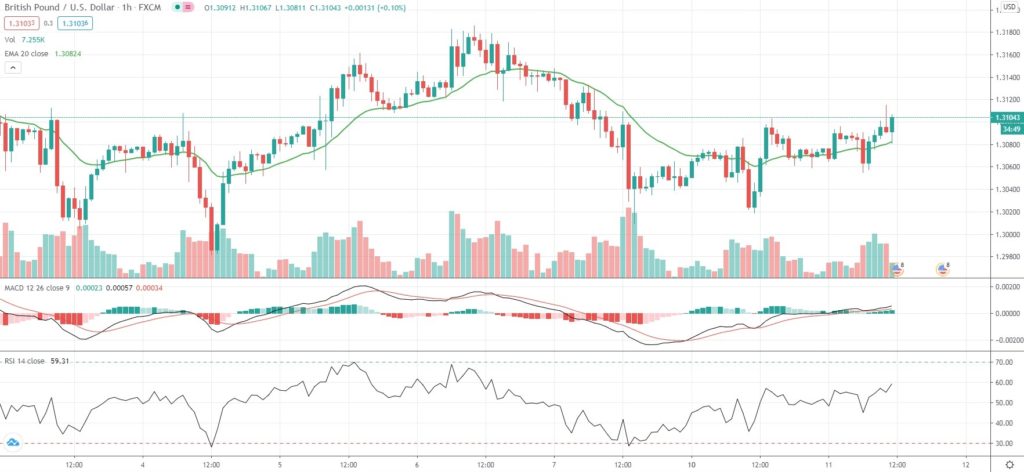GBP/USD was edging up for a second straight trading day on Tuesday, while trading just above the 1.3100 mark, despite that an earlier report by the Office for National Statistics revealed the sharpest drop in UK employment since 2009 during the three months to June.
As many as 220 000 jobs were lost during the three-month period to June, or the most since the three months to July 2009, with the overall decrease being driven mostly by a drop in employment for 65+ year old workers, part-time employees and the self-employed persons.
At the same time, the number of people filing for unemployment benefits in the country reportedly increased by 94,400 to 2.7 million in July, or at a considerably faster rate than what analysts on average had anticipated (a rise by 10,000).
The rate of unemployment remained steady at 3.9% during the three months to June, but that was attributed to many people giving up searching for work who were therefore not considered as unemployed.
The major pair retreated to an intraday low of 1.3055 right after the data was released, but managed to erase those losses later during the European session.
“Official jobs data continues to be insulated by the government’s furlough scheme, but there is little doubt that the unemployment rate will creep higher as that scheme is gradually unwound, which explains (the pound’s) muted reaction,” ING analysts wrote in an investor note.
On Pound traders’ radar now is the preliminary report on UK’s second-quarter GDP, due out on Wednesday, with the median analyst estimate pointing to an annual drop of 22.4% and a quarterly drop of 20.5%.
Meanwhile, in an interview with The Times newspaper published Tuesday, Bank of England’s Deputy Governor Dave Ramsden said the bank could accelerate quantitative easing if “signs of market dysfunction” and a much weaker recovery were observed.
As of 11:21 GMT on Tuesday GBP/USD was edging up 0.26% to trade at 1.3106, while moving within a daily range of 1.3055-1.3116. The major pair advanced 5.52% in July, while marking a second straight month of gains and its best monthly performance since May 2009. The pair lost 0.22% during the first week of August after touching highs unseen since early March.
On today’s economic calendar, at 12:30 GMT the Bureau of Labor Statistics is to report on the US Producer Price Index performance. Annual producer prices probably decreased 0.6% in July, according to market consensus, slowing down from a 0.8% drop in June.
Meanwhile, the nation’s annualized core producer price inflation, which excludes prices of food and energy, probably accelerated to 0.4% in July from 0.1% in June.
Bond Yield Spread
The spread between 2-year US and 2-year UK bond yields, which reflects the flow of funds in a short term, equaled 14.1 basis points (0.141%) as of 10:15 GMT on Tuesday, down from 16.6 basis points on August 10th.
Daily Pivot Levels (traditional method of calculation)
Central Pivot – 1.3065
R1 – 1.3110
R2 – 1.3149
R3 – 1.3194
R4 – 1.3240
S1 – 1.3026
S2 – 1.2980
S3 – 1.2942
S4 – 1.2903






